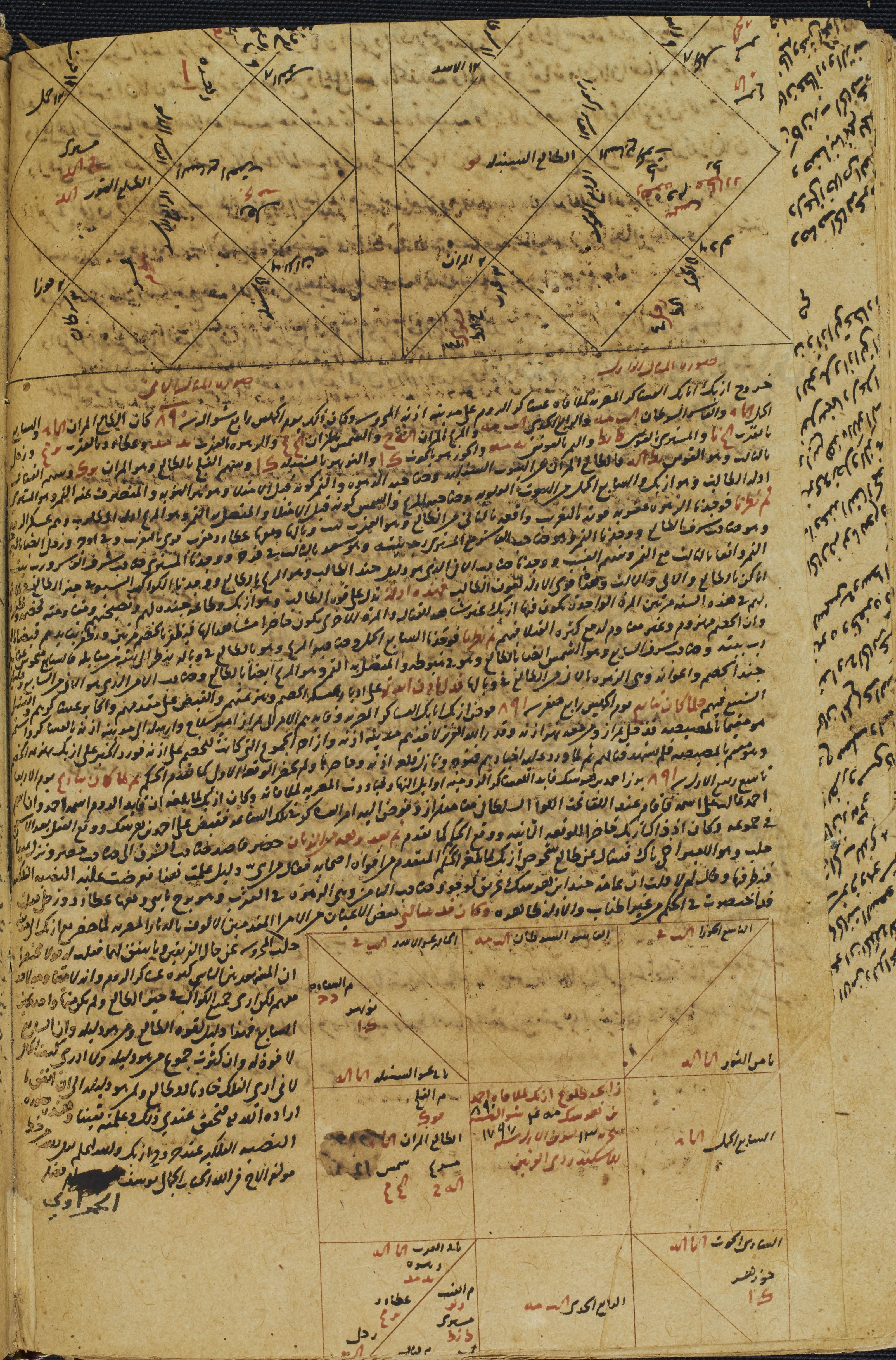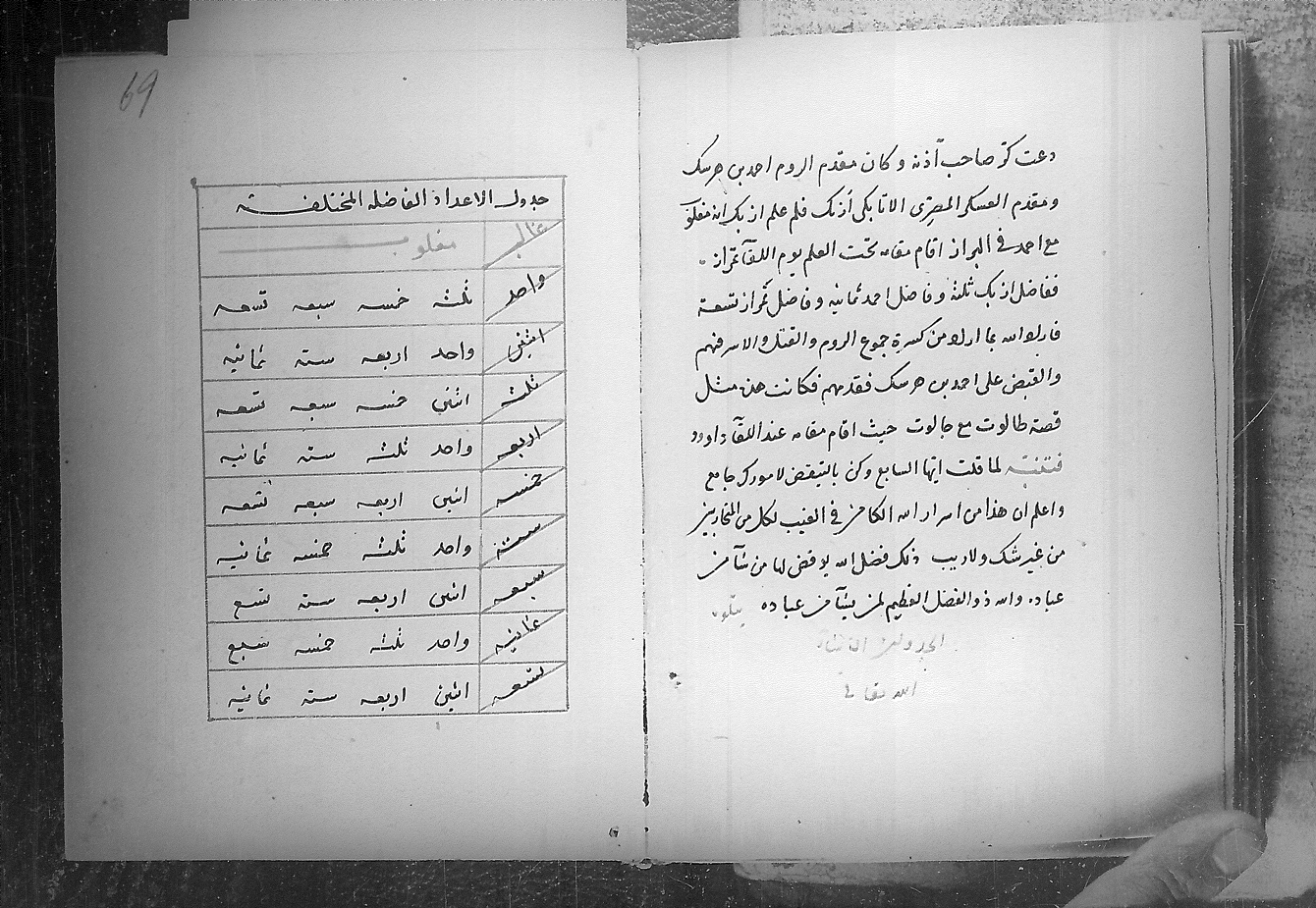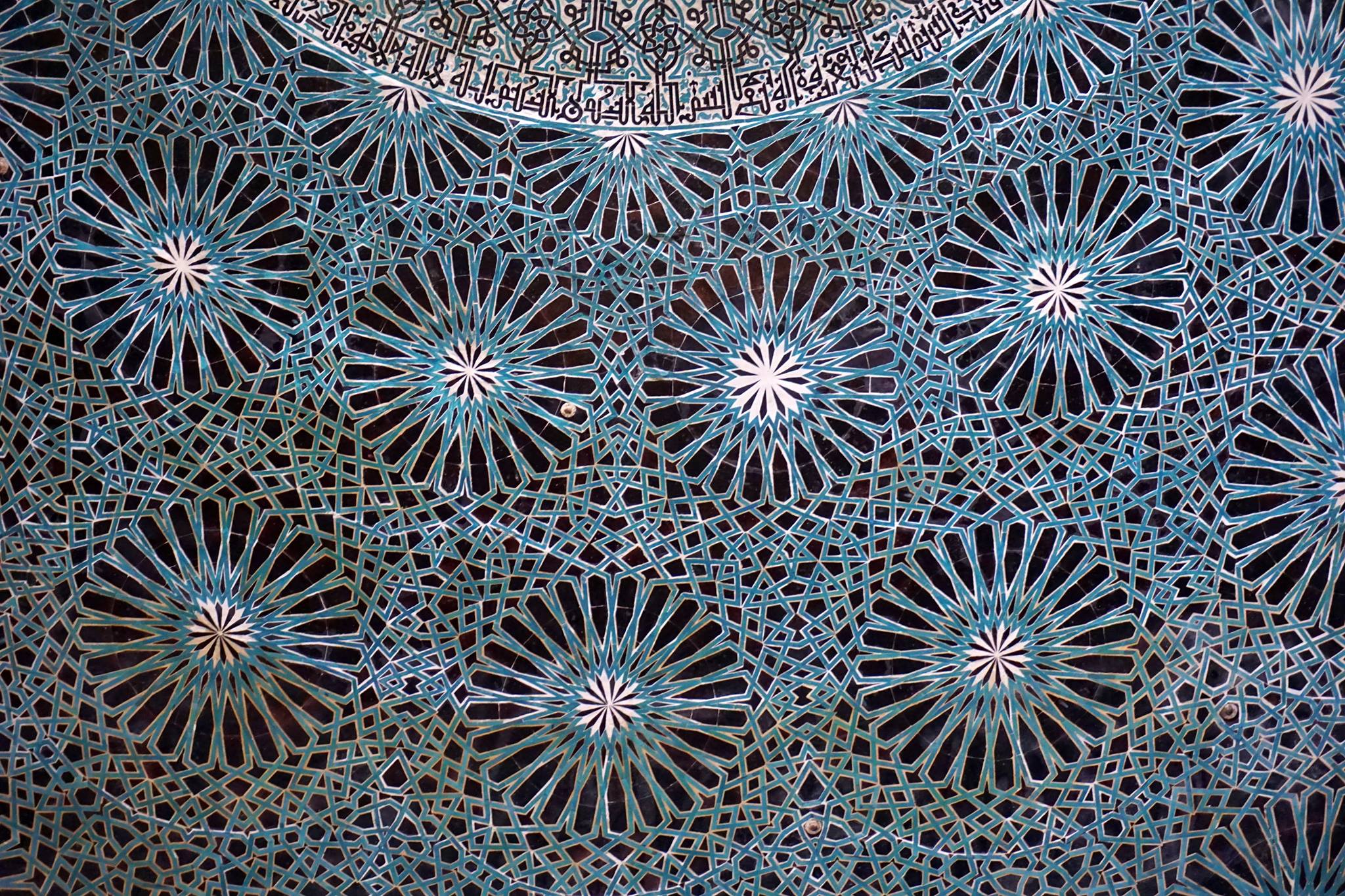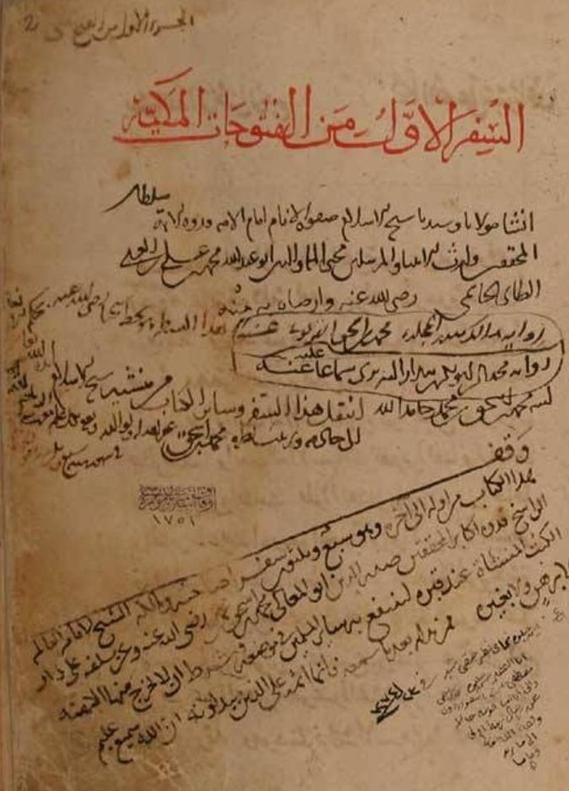Fien De Block on Occult Astrology in the Late Fifteenth Century Sultanate of Cairo
Written on March 4th, 2022 by Fien De Block
When one thinks about the scholarly life of the Mamluk Sultanate - or the Sultanate of Cairo as is has come to be called in recent academic literature1 - astrology is not the first discipline that comes to mind. In spite of fruitful academic endeavors to criticize and counter decline narratives on the period, they still linger on in expectations on the existence and importance of the occult sciences, to which astrology –at least partly, as I will argue below - belongs. In this blog post I discuss two texts that were written by and circulated among scholars in the Syrian frontier zone of the late fifteenth century sultanate. In both of them, astrology plays a central role. In the first one, it does so directly, in the other it is depicted as a subdiscipline of a religious form of mathematics, also known as lettrism. I will discuss both texts focusing on the recurring case of the battle of Adana between the Mamluk and the Ottoman army.
Before I turn to the manuscripts, however, I want to briefly discuss the title of this post. I refer to these texts as ‘occult astrology’ here, because their authors depict the discipline they practice, and for which they use the terminology of ‘ilm aḥkām al-nujūm, as aiming at a deeper understanding of the hidden realities, or the occult (maktūm or ghāʾib) by means of the stars. I use this terminology in contrast to the astrology practiced by Islamic timekeepers in this period, such as the calculation of birth horoscopes (mawālīd) and the compilation of ephemerides (taqwīm) for all kinds of applications. Muwaqqits do not refer to their practices as ‘ilm aḥkām al-nujūm, but rather as ‘ilm al-mīqāt, the science of timekeeping or more general as ‘ilm al-nujūm, the science of the stars or ‘ilm al-hay’a, theoretical astronomy. 2
ʿIlm aḥkām al-nujūm
The first manuscript in which the battle between the Mamluk army of Azbak (or Uzbek3) min Ṭuṭukh and the Ottoman army is mentioned, is a combination of a late fifteenth century copy of Kitāb al-Bāriʿ fī Aḥkām al-Nujūm by the Maghribī scholar Ibn Abī al-Rijāl (d. after 429/1037–8) and astrological reports of political events at the Syrian frontier zone of the sultanate in this period. It is written in the hand of a scholar named Aḥmad ibn Aḥmad Timurbāy, who lived and worked in Cairo at the end of the fifteenth century4. These reports, Ibn Timurbāy writes, are copied from a treatise written by a colleague of his from Aleppo, whose name was al-Jamālī Yūsuf ibn Qurqmās al-Ḥamzāwī (d. 902/ca. 1497).5 Both of them were ḥanafī scholars as well as respected members of the military elite of the sultanate.6
One of the cases in which Ibn Timurbāy and al-Ḥamzāwī illustrate the use they made of ‘ilm aḥkām al-nujūm is the battle between the Mamluk army led by the Egyptian amīr Azbak Min Ṭuṭukh and the Ottoman army in Adana. Azbak Min Ṭuṭūkh was one of the most important grand amirs under Qāytbāy’s reign, being his marshal of the army (atābak).7 The first part of the battle discussed here, took place in 890/1485 and was part of a longer conflict at the frontier of the Sultanate of Cairo with the Ottoman Sultanate between 890/1485 and 896/1491. The Ottoman sultan Bāyezīd started a campaign against the Sultanate of Cairo with the aim to annex the Adana-Tarsus region, the lower plain of Cilicia. For this campaign he received help from the Turkmen Qaramanid army. The Sultanate of Cairo on the other hand, had a military alliance with the Turkmen principality of the Ramadanids, whose center of power was located in the city of Adana at the frontiers of the Sultanate. In May 1485, an army led by the Qaramanid leader Karagöz Mehmet Pasha crossed the frontier of the Syro-Egyptian territory. At first, the Syro-Egyptian forces retracted to Aleppo. When the news of the Ottoman invasion reached Cairo around August 1485, Qāytbāy ordered the army to mobilize and sent money and provisions to the Ramadanids asking them to show resistance to the Ottoman forces. In the month of Shawwāl 890 or October 1485, the Egyptian army left for Adana under the command of Azbak. In Damascus and Aleppo the army joined forces with the provincial armies of Syria.8 For the moment right before the confrontation of both armies, a horoscope was drawn in this manuscript. The description goes as follows:
Azbak, the Atābak of the Egyptian army left to meet the Ottoman army in the well-protected city of Adana, on Thursday the fourth of Shawwāl in the year 890 when the ascendant was Libra 11° 8’. The seventh house was Aries 11° 8’ and the tenth house was Cancer 12° 45’. The fourth house was Capricorn 12° 45’. Mars was in Libra at 15° 3’ and the Sun was in Libra at 13° 3’. Venus was in Scorpio at 15° 50’, Mercury was in Scorpio at 9° 59’ and Saturn was in Scorpio at 18° 50’. Jupiter was in Sagittarius at 9° 59’ and the Moon was in Sagittarius 15° 45’. The descending node of the Moon was in Pisces at 21° and the ascending node of the Moon was in Virgo 21° and in between them was the lot of separation, located in the ascendant Libra at 16° 20’. The lot of battle was in the third house Sagittarius at 11° 5’. And the ascendant Libra is close to the house of Virgo, and its ruler is Venus. The Moon was in a stage before its completion, […]. In separation with the Moon is Jupiter. The indicator for the requesting party, that is Azbak, is the seventh house, Aries, one of the significant houses. Its lord is Mars. The Sun is in the phase before its completion and the Moon is in aspect (ittiṣāl) with Mars, the indicator for the requested party which is the Ottoman army.9
Here, Ibn Timurbāy states that the indicator for the Ottoman army is Mars, which is sixty degrees apart from the moon. Mars is the ruler (rabb) of Aries, the seventh house and the house that is the most significant for Azbak. This situation does not appear to be in favor of the Mamluk army led by Azbak. Ibn Timurbāy mentions that Azbak was not present at some of the battles that were actually won by the Mamluk army. The text continues with the events of the 4th of the month Ṣafar 891/February 9, 1486, when the Ottoman troops marched upon the Mamluk forces. 10 Ibn Timurbāy writes:
On Thursday the fourth of ṣafar of the year 891 Azbak, Atābak of the Egyptian troops […] appointed Timrāz, the ‘amīr of arms’ (amīr silāḥ) as deputy and sent him to the city of Adana with the troops.11
He then goes on explaining that:
Aḥmad ibn Hersek, the leader of the Ottoman troops came forth at the break of dawn; so the Egyptian [troops] moved on to confront him. And when [news] reached Azbak that the name of the leader of Rūm was Aḥmad – and my name is Aḥmad too – a winner according to his name (ghālib ʿalā ismi-hi), he arranged a meeting under the Sultanic banner with Timrāz, and ordered him to command the troops at this hour (fawaḍa ilayhi amr al-ʿasākir fī tilka al-sāʿa). Thus he took Ibn Hersek captive. And it was [only] from that moment on that Azbak was present at this second event and the judgement happened like it was written.12
Ibn Timurbāy states here that Azbak ordered Timrāz to command the troops because Aḥmad ibn Hersek was a winner ‘according to his name’. This fragment would sound rather enigmatic, were it not that al-Ḥamzāwī and Ibn Timurbāy wrote another text in which they discuss how one could determine the outcome of a battle by analyzing the names of the commanders.

Sirr al-Ghālib wa-l-Maghlūb
In the second text ‘al-Durr al-Maṭlūb fi-Sirr al-Ghālib wa-l-Maghlūb’, of which we have both scholars’ manuscripts, al-Ḥamzāwī and Ibn Timurbāy discuss the alphanumerical method of ‘al-Ghālib wa-l-Maghlūb’ or ‘the victor and the vanquished’.13 The terminology of the victor and the vanquished echoes the pseudo-Aristotelian work of the “Sirr al-Asrār” (“Secret of Secrets”) in which Aristotle explains to Alexander the Great how one can determine ‘the victor’ (al-ghālib) and ‘the vanquished’ (al-maghlūb) in a battle or conflict based on an analysis of the letters of the names of the leaders of the parties in battle.14 This text is not a copy of the work, but applies the technique, again, to a wide range of battles in the Syrian frontier zone. The authors mention twenty-one examples in this text, of which the last one coincides with the battle in Adana that is discussed above. As I mentioned, this battle ended with the victory of the army of the sultanate of Cairo. In this text, we find a general rule or explanation for Ibn Timurbāy’s statement that Aḥmad Ibn Hersek was a winner or ghālib according to his ism. The text says:
If you want to arrive at knowledge of the name of the victor and the vanquished, so that the latent secret of God in the hidden [side of] things (sirr al-Lāh al-kāmin fī-l ghuyūb) will be revealed to you, then calculate the name of the parties involved in battle according to the following rule: eliminate nine, until that which remains is nine or less, then enter this in the table. You will know the winner is the highest number, when the two numbers are different [i.e. one even and one odd]. If both numbers are alike [i.e. both even or odd], then the smallest of them is the winner. If they are equal, then one of them both is the lord of the sword and the other one is the lord of the pen, the dominant party is the party of the sword.15
In the table mentioned, the letters of the Arabic alphabet are given the following values:
And these are the values of the letters: ālif, yā’, qāf and ghayn have a value of one. Bāʾ, kāf and rāʾ have a value of two. Jīm, lām and shīn each have a value of three. Dāl, mīm, tā’ have a value of four. Hāʾ, nūn, thāʾ have a value of five. Wāw, sīn, khāʾ each have a value of six. Zāʾ, ʿayn and dhāl have a value of seven. Ḥāʾ, fāʾ and ḍāl each have a value of eight. Ṭāʾ, ṣād and ḍhāʾ have a value of nine.16
In the case of the battle between Azbak min Ṭuṭukh and Aḥmad Ibn Hersek, the alphanumerical method requires its user to compare the value of the ism Azbak (1 + 7 + 2 + 2 = 12, of which the sum of the digits equals 3) to the value of the ism Aḥmad (1 + 8 + 4 + 4 = 17, of which the sum of the digits equals 8). In a battle between an eight and a three, that is between an odd and an even number, the highest number will be the victor. In this case, that is eight or Aḥmad ibn Hersek. The outcome of this calculation is written down in the text itself. However, as we know, the battle in Adana was won by the army of the sultanate of Cairo. The authors do not discuss this explicitly, but, as explained above, Ibn Timurbāy emphasizes that Azbak did not lead the troops during the battle in Adana. Instead, he appointed ‘Timrāz, the ‘amīr of arms’ (amīr silāḥ) as deputy and sent him to the city of Adana with the troops’17. The value of the ism Timrāz was 9 (4 + 4 + 2 + 1 + 7 = 18, sum of the digits is 9), as mentioned by Ibn Timurbāy elsewhere in the text. The impact of Timrāz on the outcome of the battle is not explicitly discussed here, but the enigmatic fragment in the text discussed above provides an explanation, and – in that way – also a clear example of how ‘ilm aḥkām al-nujūm and the science of letters relate to each other for these authors.
The Malik of sciences and his Wazīr
Both the stars and the names of the commanders provide part of the explanation on why the Mamluk army is the winning party here. Of course one could ask oneself how ʿilm aḥkām al-nujūm is related to this alphanumerical method. This is discussed by the authors in the first part of the text on al-ghālib wa-l maghlūb. There, they introduce their view on knowledge. They write:
Know that the letters, although they are inside the forms of the soul, are the treasures in which God placed noble secrets and subtle signs, [that is] some of the numbers whether in composition or in singles, related to the state of their [i.e. the beings’] consistence. Their individual parts show themselves through their immaterial spirits by means of their bodily forms in which God brought into being the world and in which He put the signs, and made them the signs of the stars/signs (aʿlām al-aʿlām)18 and the secrets of judgements.19
In this paragraph, the authors suggest that in reading and interpreting the signs of the stars we get an indication of the numbers that constitute their form, a number that is referred to in the language we use to talk about these stars. Their form (ṣūra) is the ideal, non-material part in them that makes up their essence and that keeps the parts of their body together as a principle of unity. This is not only the case for the stars, but for all existing things. Letters are used to name all existing things, that is, all combinations of form and matter.20 In this way, letters give us an idea of the number specific to the essence of a being and are thus a part of the ideal world inserted in matter. Citing the ikhwān’s letter on magic (sihr)21, the authors further clarify that:
If all the sciences are like a governor (wazīr), then the science of mathematics (ʿilm al-ḥisāb) is like the ruler (malik), and I add to this: except for the science of religion (ʿilm al-dīn).22
In line with the aforementioned correlation between letters and numbers, ʿilm al-ḥisāb is used here in a lettrist sense. The fact that the science of religion or ʿilm al-dīn is, according to al-Ḥamzāwī the leader or malik of all sciences, shows the inherently religious character of ʿilm al-ḥisāb. The explicitly ṣūfī terminology used throughout the text is evocative of this aspect of lettrism. As such, the authors’ work does not only shed light on occult astrology within the late fifteenth century sultanate of Cairo, but also suggests relations to a wider network of occultism scholars across the borders of political entities, sometimes referred to as the ‘new brethren of purity’.23
Conclusion
When one thinks about the scholarly life of the Sultanate of Cairo, astrology is not the first discipline that comes to mind. However, the two texts discussed in this post show how scholars within the sultanate not only used ʿilm aḥkām al-nujūm as a means to understand the situation on the battlefield, but also how it fits into a wider ‘cosmological imaginary’24 that links lettrism to astrology and is particular to the early modern Islamicate world. As such, al-Ḥamzāwī and Ibn Timurbāy’s practice of occult astrology provides a contribution to this imaginary from within the sultanate of Cairo.25
Author Bio
Fien De Block is a postdoctoral researcher at Ghent University (Belgium). She obtained her Phd in 2020 with a dissertation entitled ‘(Re)drawing the lines: The science of the stars in the late fifteenth century Sultanate of Cairo’, after which she worked as a guest professor of Arabic and Islamic studies (2020-2021). Her current research focusses on the use, circulation and reproduction of texts on ʿilm aḥkām al-nujūm in the late sultanate of Cairo.*
-
I follow the argument made for this shift by Jo Van Steenbergen in: Jo Van Steenbergen, “Revisiting the Mamluk Empire. Political Action, Relationships of Power, Entangled Networks, and the Sultanate of Cairo in Late Medieval Syro-Egypt,” in The Mamluk Sultanate from the Perspective of Regional and World History: Economic, Social and Cultural Development in an Era of Increasing International Interaction and Competition, ed. Reuven Amitai and Stephan Conermann, 2019, p. 75–106 The terminology of the Cairo Sultanate is closer to the historical actors’ categories. It also moves away from the focus on the alleged significance of the Mamluk-system in the self-identification of the Sultanate. ↩
-
Fien De Block, “Timekeepers-Teachers and Their Discursive Instruments,” in Living with Nature and Things: Contributions to a New Social History of the Middle Islamic Periods, ed. Bethany Walker and Abdelkader Al Ghouz (Bonn: V&R Unipress - Bonn University Press, 2020), 681–702. There are however, interesting links between timekeeping and occult astrology in this period. The practitioners of ‘ilm aḥkām al-nujūm used ephemerides/taqwīm tables compiled by timekeepers, and the intellectual milieus have a significant overlap ↩
-
Carl F. Petry, Protectors or Praetorians: The Last Mamluk Sultans and Egypt’s Waning as a Great Power, 1994, p. 26. Uzbek is probably the transcription closest to the Turkish original. As Petry indicates, Azbak is more commonly used in Arabic. Therefore, I will use this variant here. The transcription of names in this texts is, in general, based on their spelling in the Arabic manuscripts studied (hence e.g. Timurbāy instead of Timūrbāy) ↩
-
šams al-Dīn Aḥmad ibn ʹAbd al-Raḥman ibn Muḥammad al-Sakhāwī, Al-Ḍaw’ al-Lāmi’ Li-Ahl al-Qarn al-Tāsiʿ, vol. 1, , 2003, p. 210. ↩
-
The autograph manuscript written by al-Ḥamzāwī, has up until today not been found. A later copy of it, written down in 1318/1900 is part of the collection of the National Library of Cairo. This copy has not been taken into account here because it was not written in the period itself (and hence is a product of a different context) and because it is kept in the section of ‘ḥurūf wa-awfāq’ which is currently inaccessible. ↩
-
Šams al-Dīn Aḥmad ibn ʹAbd al-Raḥman ibn Muḥammad al-Sakhāwī, Al-Ḍaw’ al-Lāmi’, 2003, p. 210. Muḥammad ibn Ibrāhīm Ibn al-Ḥanbalī, “723 -Yūsuf Ibn Qurqumās al-Sayfī Qāytbāy al-Ḥamzāwī al-Amīr al-Kabīr al-Ḥanbalī Jamāl al-Dīn Abū al-Maḥāsin al-Ḥalabī al-Ḥanafī,” in Durr Al-Ḥabab Fī Tārīkh Aʿyān Ḥalab, vol. II, II vols. (Damascus: Wizārat al-Thaqāfah, 1972), 586–87. ↩
-
Petry, Protectors or Praetorians, p. 15. ↩
-
Shai Har-El, Struggle for Domination in the Middle East: The Ottoman-Mamluk War 1485-1491 (Leiden/New York/Köln: E.J. Brill, 1995), xi–xiii. ↩
-
Ibn Timurbāy, al-Ḥamzāwī, and Ibn Abī al-Rijāl al-Kātib al-Shaybānī, fol. 49V. ↩
-
Har-El, Struggle for Domination in the Middle East: The Ottoman-Mamluk War 1485-1491, 133–51. ↩
-
Ibn Timurbāy, al-Ḥamzāwī, and ‘Alī Ibn Abī al-Rijāl, “Mukhtaṣar Kitāb al-Bāriʿ fī Aḥkām al-Nujūm” (Cairo, 844/ 1490), Ms. Cairo (DAK), MM 13, fol. 49V. ↩
-
Ibn Timurbāy, al-Ḥamzāwī, and ‘Alī Ibn Abī al-Rijāl, “Mukhtaṣar Kitāb al-Bāriʿ fī Aḥkām al-Nujūm” (Cairo, 844/1490), Ms. Cairo (DAK), MM 13, fol. 49 R. ↩
-
al-Jamālī Yūsuf ibn Qurqumās al-Ḥamzāwī, “Al-Durr al-Maṭlūb fī Sirr al-Ghālib Wa-l-Maghlūb” (Istanbul, 1489 894), Ahmet III 2485,6, Topkapı Sarayı Museum Library.; Aḥmad ibn Aḥmad Ibn Timurbāy and al-Jamālī Yūsuf ibn Qurqmās al-Ḥamzāwī, “Al-Durr al-Maṭlūb Fi Sirr al-Ghālib Wa-l-Maghlūb” (1499), Ms Arabe 922. Both manuscripts are very much alike, although al-Hamzāwī’s handwriting is much more legible than Ibn Timurbāy’s. ↩
-
Miklos Maroth, The Correspondence between Aristotle and Alexander the Great, 2006,p. 2–9. ↩
-
al-Ḥamzāwī, “Al-Durr al-Maṭlūb Fī Sirr al-Ghālib Wa-l-Maghlūb” (Aleppo, 894/1488), Ms. Istanbul (Topkapı Sarayı Museum Library ), Ahmet III 2485,6, fol. 63V. The sentence “eliminate nine until there is less than nine or nine” refers to the calculation of the sum of the digits, where 9 equals 0. ↩
-
al-Ḥamzāwī, “Al-Durr al-Maṭlūb Fī Sirr al-Ghālib Wa-l-Maghlūb” (Aleppo, 894/1488), Ms. Istanbul (Topkapı Sarayı Museum Library ), Ahmet III 2485,6, fol. 63V. ↩
-
Ibn Timurbāy, al-Ḥamzāwī, and ‘Alī Ibn Abī al-Rijāl, “Mukhtaṣar Kitāb al-Bāriʿ fī Aḥkām al-Nujūm” (Cairo, 844/1490), Ms. Cairo (DAK), MM 13, fol. 49 R. ↩
-
As discussed by Gardiner, the expression of aʿlām al-aʿlām is polysemic:’[A]n aʿlam can be a star or asterism as well as a sign or letter, such that the phrase can be the “sign of a sign,” “the sign of a star,” “the star of a letter”’ Noah Gardiner, “Stars and Saints The Esotericist Astrology of the Sufi Occultist Ahmad Al-Buni,” Magic, Ritual, and Witchcraft, Spring 2017, 52. ↩
-
al-Ḥamzāwī, “Al-Durr al-Maṭlūb Fī Sirr al-Ghālib Wa-l-Maghlūb” (Aleppo, 894/1488), Ms. Istanbul (Topkapı Sarayı Museum Library ), Ahmet III 2485,6, fol. 62R. ↩
-
The authors provide a further framework for this view in the form of a lettrist cosmology inspired by – and paraphrased from – Aḥmad al-Būnī’s Laṭā’if al-ishārāt. I am indebted to Noah Gardiner for pointing this out to me, and for helping me to translate this part of the manuscript. ↩
-
Ikhwān al-Ṣafā’, Rasā’il Ikhwān al-Ṣafā’, vol. IV, IV vols. (Beirut: Dār Ṣader, 2008). ↩
-
al-Ḥamzāwī, “Al-Durr al-Maṭlūb Fī Sirr al-Ghālib Wa-l-Maghlūb” (Aleppo, 894/1488), Ms. Istanbul (Topkapı Sarayı Museum Library ), Ahmet III 2485,6, fol. 61V. ↩
-
Ilker Evrim Binbaş, Intellectual Networks in Timurid Iran: Sharaf al-Dīn ‘Alī Yazdī and the Islamicate Republic of Letters, Cambridge Studies in Islamic Civilization (Cambridge: Cambridge University Press, 2016), 114-164; Cornell Fleischer, “Ancient Wisdom and New Sciences: Prophecies at the Ottoman Court in the Fifteenth and Early Sixteenth Centuries,” in Falnama: The Book of Omens (Washington: Thames & Hudson, 2010), 232–43; Matthew Melvin-Koushki, “The New Brethren of Purity: Ibn Turka and the Renaissance of Neopythagoreanism in the Early Modern Persian Cosmopolis,” in Companion to the Reception of Pythagoras and Pythagoreanism, ed. Aurélien Robert and Irene Caiazzo, (Leiden: Brill, forthcoming), 1–6. ↩
-
Gardiner, “Books on Occult Science”, 735-6. ↩
-
Gardiner, “Books on Occult Science”, 736. Melvin-Koushki, “Powers of One: The Mathematicalization of the Occult Sciences in the High Persianate Tradition,” 137–38. ↩

